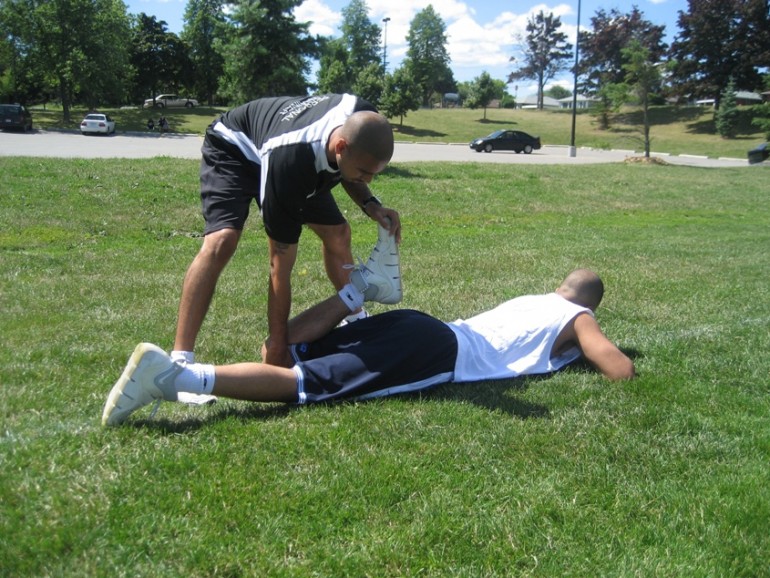
Unfortunately, injuries tend to go hand-in-hand with training. Although precautionary measures should always be taken to minimize the risk of injury, accidents do happen. Here are some tips to help prevent training related injuries:
1) Sufficient warm-up
- Dedicate roughly 5-10min at the beginning of each workout to warm-up your muscles. All it takes is for you to engage in any form of cardio activity – starting at a slow pace and gradually working your way up to a brisk walk/light jog. Your goal is to feel your core temperature rise slightly (generally depicted by very light sweating). “Cold” muscles are much more predisposed to injury as they are less pliable.
- Performing a warm-up set of a compound exercise (i.e. dumbbell squat with shoulder press) further helps to minimize the risk of getting a muscle strain.
- A stretch can follow the warm-up (particularly for muscle groups that were previously injured or feeling extra tight).
2) Warm-down and stretch
- To avoid excessive DOMS (delayed onset muscle soreness) and tightness, ensure that you perform a 5-10min warm-down following your workout. This is the different to the warm-up in that you maintain a leisurely, slow pace for the entirety of the warm-down period. The goals here are to bring the heart-rate down gradually, avoid pooling of the blood in the lower extremities as well as dissipate some of the acidic build-up within the muscles.
- Stretching after a workout is also very important. Hold each stretch for 15-30s and repeat 2-3 times.
3) Stay fit
- Keeping your body strong and flexible will act to minimize the risk of injury both in and out of the gym. This is one of the major health related benefits of exercise.
- Flexibility training is very under appreciated; ensure that you maintain flexibility within the joints as you age, as aging acts to decrease your range of motion.
4) Perform movements in a slow and controlled manner
- Both the concentric (positive) and eccentric (negative) components of the lift should take approximately 2s each (total rep taking 4s).
5) Have a workout partner
- Having a partner will not only add to overall safety, it will boost your results through the roof! Having a spot will enable you to safely push your limits and see great progress.
6) Avoid overtraining
- Rest adequately at night (6-8hrs) and don’t work the same muscle groups on consecutive days.
7) Keep natural back curvature
- Avoid arching or hyperextension to maintain integrity of the spine.
8) Do not lock joints at end of movement
- Avoid excess joint stress by ending movement with slight (~10 degree) bend in joint.
9) When standing, always keep knees slightly bent and back in natural posture
- Take the stress off of the lower back.
- Stay well nourished
- Assist the body and mind in staying healthy and injury free by supplementing your active lifestyle with top-notch nutrition.
CPAFLA Third Edition, Section 1 pg 4 CSEP-H&FP’s Health and Related Appraisal and Counseling Strategy




